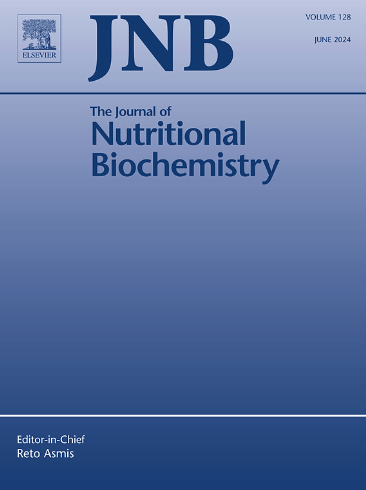The cell membranes undergo biochemical and biophysical changes in response to hydroxycinnamic acid derivatives: ferulic acid and caffeic acid
IF 4.9
2区 医学
Q1 BIOCHEMISTRY & MOLECULAR BIOLOGY
引用次数: 0
Abstract
Ferulic acid (FA) and caffeic acid (CA), due to their strong antioxidant properties, are widely used both in dietary supplements and as ingredients in cosmetics. However, despite the undoubtedly beneficial properties of these molecules, they can also exhibit toxic effects. This study aimed to investigate which concentrations of the compounds are toxic for different types of cells and which are beneficial. Detailed analyses were performed on human cells (U937, HL-60, SK-N-SH) and mouse cells (B16-F0), as well as on cell membrane models created using the Langmuir technique. Based on biochemical studies, it was shown that both compounds can act cytotoxically, although FA is significantly more cytotoxic than CA. This difference in toxicity levels is attributed to the presence of different substituents, which affect the molecules' hydrophobicity and, consequently, their localization in membranes. Based on model membranes, it was demonstrated that the polar parts of membranes are decisive in determining the degree of this interaction. While cinnamic acid derivatives offer localized health benefits, they can also have toxic effects on different types of cells.

在羟基肉桂酸衍生物阿魏酸和咖啡酸的作用下,细胞膜发生生化和生物物理变化。
阿魏酸(FA)和咖啡酸(CA)由于其强大的抗氧化性能,被广泛用于膳食补充剂和化妆品成分。然而,尽管这些分子无疑具有有益的特性,但它们也可能表现出毒性作用。这项研究的目的是研究哪些浓度的化合物对不同类型的细胞是有毒的,哪些是有益的。对人细胞(U937, HL-60, SK-N-SH)和小鼠细胞(B16-F0)以及使用Langmuir技术建立的细胞膜模型进行了详细的分析。根据生物化学研究,这两种化合物都具有细胞毒性,尽管FA的细胞毒性明显高于CA。这种毒性水平的差异归因于不同取代基的存在,这影响了分子的疏水性,从而影响了它们在膜中的定位。基于模型膜,证明了膜的极性部分是决定这种相互作用程度的决定性因素。虽然肉桂酸衍生物提供局部健康益处,但它们也可能对不同类型的细胞产生毒性作用。
本文章由计算机程序翻译,如有差异,请以英文原文为准。
求助全文
约1分钟内获得全文
求助全文
来源期刊

Journal of Nutritional Biochemistry
医学-生化与分子生物学
CiteScore
9.50
自引率
3.60%
发文量
237
审稿时长
68 days
期刊介绍:
Devoted to advancements in nutritional sciences, The Journal of Nutritional Biochemistry presents experimental nutrition research as it relates to: biochemistry, molecular biology, toxicology, or physiology.
Rigorous reviews by an international editorial board of distinguished scientists ensure publication of the most current and key research being conducted in nutrition at the cellular, animal and human level. In addition to its monthly features of critical reviews and research articles, The Journal of Nutritional Biochemistry also periodically publishes emerging issues, experimental methods, and other types of articles.
 求助内容:
求助内容: 应助结果提醒方式:
应助结果提醒方式:


